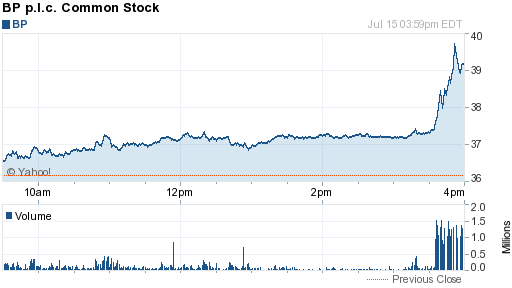I have read some posts by people out there that believe that Nokia is a value play and is worth purchasing. It is trading at a price that is lower than it has been in a decade ($8.36/share presently; as late as 2007 it was $40/share). I’ve briefly looked at Nokia and, financially speaking, while they have a decent balance sheet and some positive net income, their profitability is sliding down and this represents why the market has discounted the stock.
The first item I would like to address is the dividend – it is very likely it will be slashed. An investor putting money into Nokia for the dividend is going to be very disappointed, likely within a year. Nokia will need to go into a cost cutting and capital conversation mode soon and the easiest thing to go before making the very difficult decisions is the dividend.
However, the proper valuation analysis for Nokia is not a financial one; rather, it is determining who is going to be the winner in the mobile handset space. A decade ago, Nokia was clearly the champion in this industry – for the most part they edged out Motorola and Ericksson (now Sony Ericksson).
Between then and now, we have seen a huge quantum leap in mobile technology. Voice functions are trivial – it is all about mobile data, web and video. Apple has invaded the space with their hardware/software offering (iPhone), and Google has invaded the space with their software (Android). These two factors alone have likely put Nokia behind with inferior product offerings.
While I am not the techie I used to be when I was younger (I no longer follow the computer hardware scene and my cell phone is a 2004 Nokia model that I use exclusively for voice and will feel bad if I lose it), I still peripherally follow the industry. It has matured so quickly compared to when I was a teenager that it has gotten relatively boring. That said, there are plenty of people out there that follow it feverishly, and the following comment by somebody following Nokia’s operating system (Symbian) pretty much sums up the picture:
To Nokia, you guys are losing. Hard. Wake the hell up. Doing the same thing repeatedly while expecting different results is the definition of insanity. I’ve been a huge Nokia fan since my 2nd cellphone, and I just can’t do it any longer. You guys aren’t competing like you once were, and everyone but you seems to see that. You used to build the world’s best smartphones, the world’s best cameras, the world’s best GPS units – you’ve lost pretty much all of that, and with nothing to show for it. You unveiled your Ovi vision over 2 years ago – I was there. Today, it’s still a complete mess. I have to log in every single time I visit the site – regardless of how many times I check the ‘remember me’ box. I spent 6 months (and about 3 hours at Nokia World 2009) trying to find someone to help me with Ovi Contacts on the web – no one knew who to point me to. You spent millions of dollars purchasing your Ovi pieces – Ovi Files, Ovi Share, and a host of other little companies – are you proud of what you ‘built’ with them? Most of your own employees (that I’ve talked to) don’t even use them, so why should I?
This really reminds me somewhat of what happened to IBM’s OS/2 when they were competing against Microsoft in the desktop operating system marketplace. Another example is what happened to Cyrix when they were competing against AMD and Intel for the processor market. Both had inadequate offerings and were only running on steam before they finally folded – Cyrix was bought off by IBM, and OS/2 was canned. I am sure there is a better analogy that would apply to this particular situation, but the point is the same – Nokia’s mobile platform, in absence of something completely hidden and not marketed yet, is toast.
Without control over the platform, there is no opportunity for them to gain a market premium, and they will become a commodity producer of mobile hardware – a very low profit industry. Nokia’s best option is likely to sell out as quickly as possible to the highest bidder since with every passing week they will be commanding less of a premium on the market.
If Nokia’s board of directors are rational, they should be looking for an exit, but finding somebody willing to fork out $31 billion to buy out the company (this assumes no takeover premium) would be difficult. As such, I wouldn’t touch Nokia equity – investors are likely to face continued losses. You might even be able to make a good case for a short sale, but my knowledge in this area of the business world is not comprehensive enough to make such a decision.
